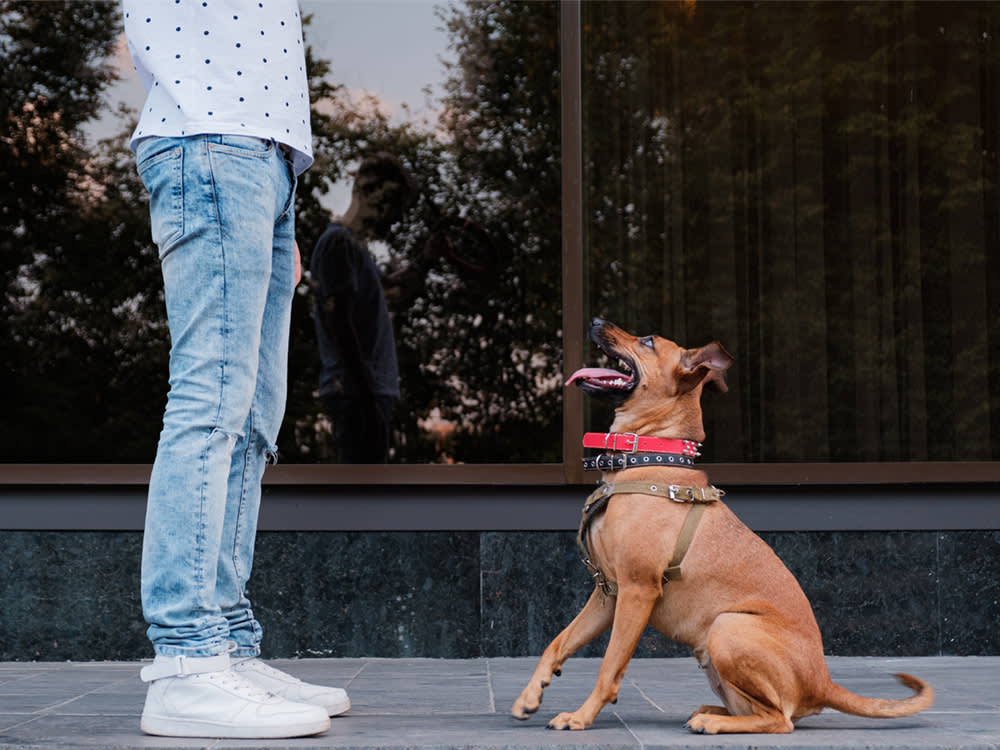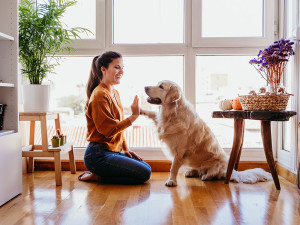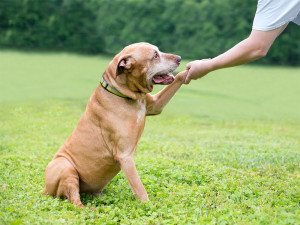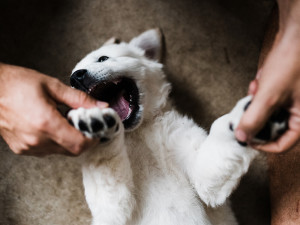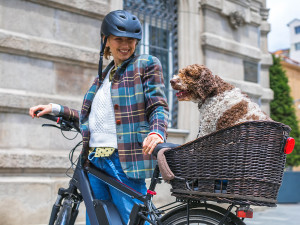Teach Your Dog to ”Back Up”
There are plenty of benefits to teaching your dog this cute trick
If your dog has already mastered a slew of basic tricks like crawl, spin and roll over, and you’re looking for something new to teach them, look no further. Teaching your dog to back up – to move away from you by taking steps backwards – is a great choice. But it’s more than just a cute party trick; teaching your pup to back away from you is actually a pretty useful trick.
Even if your dog has a solid stay and wait, teaching your dog to back up will come in handy in many situations. Dogs can sometimes get in the way or literally underfoot, and asking them to “back up” solves the problem. You might be opening the front door or the fridge and your dog is crowding the space. Or asking your dog to back away from a rubbish bin, the dishwasher, another dog’s food bowl or a toy.
The ��“back up” command also works while on walks to deter them from anything found on a street that looks gross or dangerous. While it’s true that the cue “leave it” will also work in those contexts – having a dog create physical distance between themselves and the forbidden object sometimes helps them resist temptation. “Leave it” only tells most dogs that they may not grab something, but it gives them no help deciding what to do instead. The cue to “back up” instructs them with a specific incompatible behaviour to perform. (A dog cannot simultaneously approach the dishes in the dishwasher and back away from them.)
Whether you ask them to back out of a crowded kitchen, to get out of your way as you carry a load of laundry or to back away from a crossing with bikes flying by – there’s no limit to how you can use this important cue.
Teach your dog to back up
In addition to its great practicality, the “back up” cue is relatively easy to teach. Here’s how.
1. Stand in front of your dog
Start with your dog standing in front of and paying attention to you. Move towards your dog calmly.
2. Reward your dog when they step back once
When they take a step backwards, reinforce immediately with a click/treat or a treat. For some dogs, a couple of steps in their direction work best but for other dogs, a slight lean is most effective.
3. Take multiple steps toward your dog
Reinforce your dog for taking a step backwards until they do it reliably. Then, move towards your dog until they have taken more than one step backwards. Reward them for taking multiple steps.
4. Associate the cue “back up” to the action
Once your pup understands that backing up is a way to earn treats, say the cue “back up” before moving towards them, and reinforce them for responding appropriately.
5. Practise, practise, practise
With practice, you can phase out the motion towards your pup so that they are backing up in response to the cue alone. You can use a visual cue, such as extending your arm towards them instead of the verbal cue or in addition to it.
Choosing your verbal cue
While I use the verbal cue “back up” for this behaviour, you may use any verbal cue as long as it is consistent and easy to remember. A few common cues for this same behaviour are “back out”, “get back” and “beep beep”. Any of these words will work equally well. Choose the one you like best, but keep in mind that it’s best to avoid using a command that sounds similar to any cues your dog already knows for any other behaviours.
Common training hiccups
Some dogs will respond to your motion towards them by sitting down or by turning around. If your dog is a sitter during this training, try holding a treat a few inches over their head and slowly moving it towards their back end. This causes most dogs to step back rather than sit and you can then reinforce the behaviour.
If your dog’s tendency is to turn, try to train them in a narrow hallway or between two large pieces of furniture so that there’s not enough room for them to turn around. Presented with such an obstacle, most dogs will try to back up as an alternative, providing you with an opportunity to reinforce the behaviour you’re looking for.
